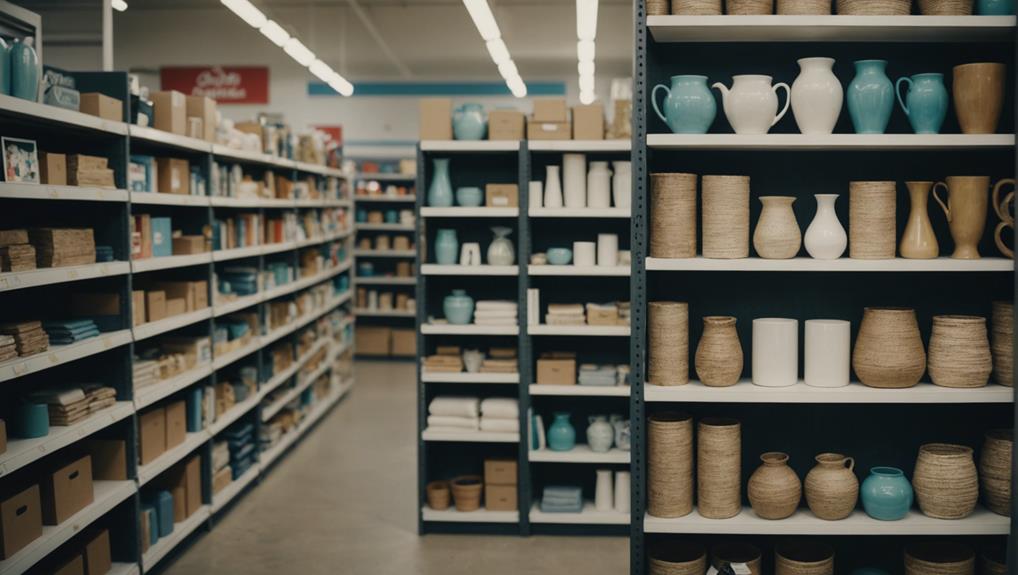When trimming LED strip lighting, it is important to locate the designated cutting lines and use small scissors for precise cuts in order to keep the copper connectors intact. Carefully remove the rubber cover and adhesive tape. Customize the length by measuring accurately and clearly marking cutting points. For safety reasons, use sharp tools, disconnect the lights, and follow the manufacturer’s guidelines. To ensure the copper connections remain intact, handle delicately, use a 4-pin connector, and secure cut ends properly. If you plan to continue using the cut ends, consider using a 4-pin connector that fits well and ensures a reliable connection. Following these steps will ensure effective customization and functionality.
Key Takeaways
- Locate designated cutting lines on LED strips to avoid damage.
- Use sharp scissors for precise cuts along cutting points.
- Ensure copper connectors remain intact during cutting process.
- Remove rubber cover and adhesive tape carefully after cutting.
- Secure cut ends with a 4-pin connector for continued functionality.
Identifying Cutting Lines on LED Strip
When preparing to cut LED strip lighting, users should first locate the designated cutting lines indicated by dashed lines or scissor icons. These cutting points are vital as they signify where the strip can be safely cut without causing any damage to the lights.
It's important to note that not all LED strip lights come with pre-marked cutting points, so users must refer to the manufacturer's instructions to determine where it's safe to cut the strip. By following these designated cutting lines, individuals can achieve a clean and precise cut, allowing for customization of the LED strip to fit specific lengths required for various lighting projects.
Identifying these cutting lines is essential for tailoring the LED strip lights to the desired measurements, ensuring a professional and polished finish for any lighting endeavor.
Using Small Scissors for Cutting
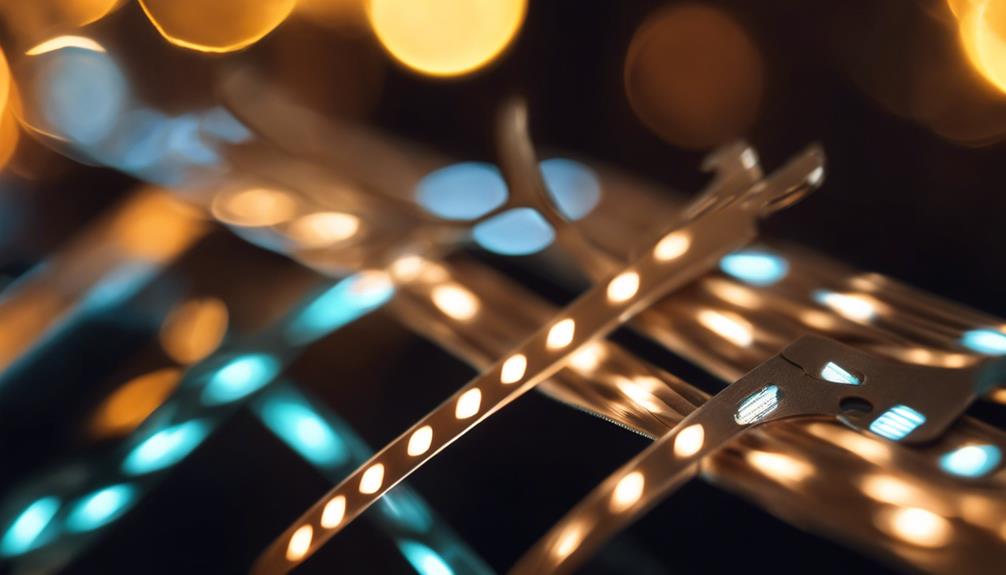
Small scissors are vital tools for cutting LED strip lights with precision and control. Their small size allows for accurate cuts along the designated cutting points, minimizing the risk of damaging the lights or circuitry.
Scissors Size Matters
Using small scissors to cut LED strip lighting guarantees precise and clean cuts that maintain control along designated points on the strip.
Small scissors are ideal for this task due to their importance and ability to make clean cuts without damaging the LED components or circuitry.
The compact size of small scissors allows for intricate cuts, ensuring a neat and professional finish.
Maneuvering around tight corners or intricate designs is made easier with small scissors, making them a practical choice for cutting LED strip lights.
It's important to use sharp scissors to achieve the desired results and avoid any mishaps during the cutting process.
Precision Cutting Technique
For precise and clean cuts when working with LED strip lighting, consider using small scissors for a controlled cutting experience.
Small scissors are ideal for achieving detailed cuts along the designated cutting points on the strip. This precision cutting technique with small scissors guarantees the integrity of the copper connections on the LED strip, maintaining its functionality.
The use of small scissors provides better control and accuracy when cutting LED strip lights to the desired length, preventing any damage to the LED lights or circuitry. By opting for small scissors, you can secure a smooth cutting process that results in a professional finish for your LED strip lighting project.
Ensuring Copper Connectors Remain Intact
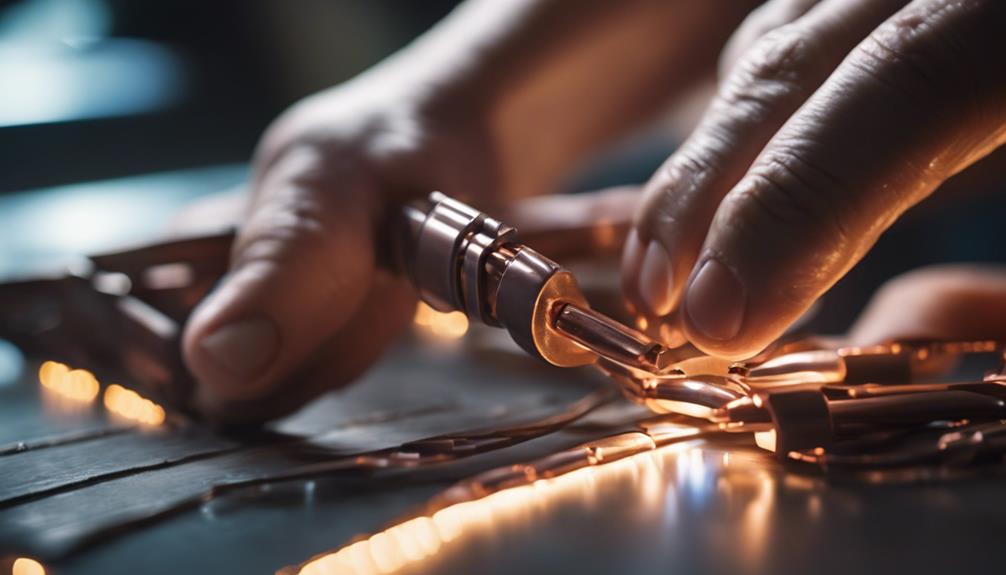
Preserving the integrity of the copper connectors when cutting LED strip lighting is pivotal to maintaining electrical connectivity and ensuring the functionality of the strip. LED strip lights offer an energy-efficient and versatile lighting solution for various applications.
To make sure the copper connectors remain intact during the cutting process, it's essential to handle the strip with care. When cutting the strip, make sure to carefully sever the copper connection line using small scissors. This precision cutting technique helps avoid damaging the connectors, ensuring that they can be easily reconnected later.
By preserving the integrity of the copper connectors, you guarantee seamless reconnection and continued functionality of the LED strip lighting. Proper handling during the cutting process is essential for maintaining the electrical connectivity of the strip and maximizing its lifespan.
Removing Rubber Cover From LED Strip

When customizing or repairing LED strip lights, it's important to carefully peel back the rubber cover to expose the copper connectors.
The rubber cover serves to protect the circuitry and provide insulation. By removing this cover, individuals can access the copper connectors for cutting and connecting the LED strip.
Peel off Rubber Cover
Carefully peel off the rubber cover from the LED strip to reveal the adhesive backing for mounting.
- Exposing the adhesive backing enhances the installation process.
- Removing the rubber cover protects the LED strip during mounting.
- Careful peeling prevents damage to the LED lights underneath.
When handling LED strip lights, gently removing the protective rubber cover guarantees a smooth and secure mounting experience. By following these steps, users can effectively prepare the LED strip for attachment to various surfaces without compromising the integrity of the lights.
Strip Rubber Covering
To properly access the copper connectors on LED strip lights, gently peel off the rubber covering from one side of the strip. The rubber cover safeguards the circuitry and must be removed cautiously to prevent any harm. Exposing the copper connectors is vital for establishing electrical connections when cutting and reattaching LED strips.
Remove Rubber Insulation
Peeling off the rubber insulation from one side of the LED strip exposes the copper connectors essential for cutting and reconnection.
- Carefully peel off the rubber cover to access the copper connectors.
- Make sure the adhesive tape on the other side remains intact for secure attachment.
- Removing the rubber insulation is vital for effectively cutting and reconnecting LED strip lighting.
Peeling Off Adhesive Tape

To guarantee a secure attachment, make sure the adhesive tape on the LED strip is meticulously lifted from one corner. When peeling off the adhesive tape, it's important to start slowly to prevent any damage to the strip or the adhesive backing. By carefully peeling the tape back, you make sure that the sticky surface of the LED strip is fully exposed for mounting purposes. Additionally, cleaning the area where the adhesive will be applied is essential to establish a strong and lasting bond.
Properly securing the peeled adhesive tape is essential for ensuring that the LED strip stays in place effectively, providing the desired lighting. Taking the time to peel off the adhesive tape correctly contributes to the overall longevity and performance of the LED strip. By following these steps, you can optimize the adhesive's effectiveness and create a reliable attachment for your LED strip lighting.
Customizing Length for Specific Needs
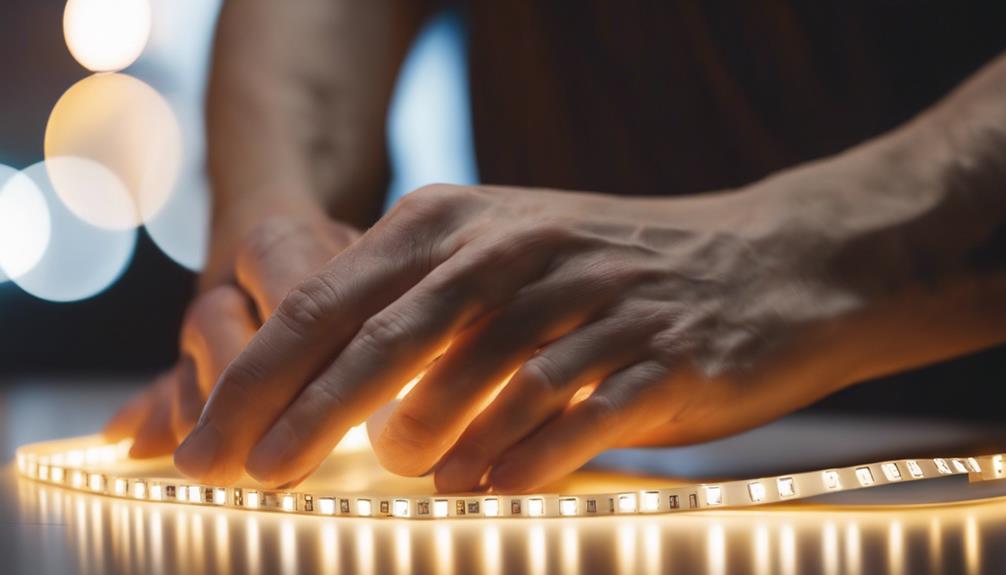
LED strip lights can be cut at specific points to suit individual needs accurately. By measuring and marking the desired length, users can guarantee precise cuts without damaging the lights.
This customization feature allows for versatile applications in various lighting projects.
Measure and Mark
When customizing the length of LED strip lighting to suit specific needs, measuring and marking accurately is crucial for precise cutting. To guarantee a successful customization process, consider the following tips:
- Use a measuring tape to determine the exact length required.
- Mark the cutting points clearly using a pencil or tape to avoid any mistakes.
- Double-check the measurements before cutting to prevent errors and wastage of the LED strip lights.
Cut With Precision
For precise customization of LED strip lighting, guarantee a clean cut by following designated cutting points. When you cut your LED strip at these marked positions, you secure a neat and accurate result, without compromising the functionality of the lights.
Precision cutting is essential for tailoring the length of the strip to fit specific needs and spaces. By adhering to the manufacturer's guidelines on cutting techniques, you can maintain the integrity of the lights and easily connect them for diverse applications.
Properly cut LED strip lights retain their versatility and can be seamlessly integrated into various setups. Remember, a precise cut is the key to achieving the desired lighting layout while ensuring top performance.
Tools Needed for Precision Cutting
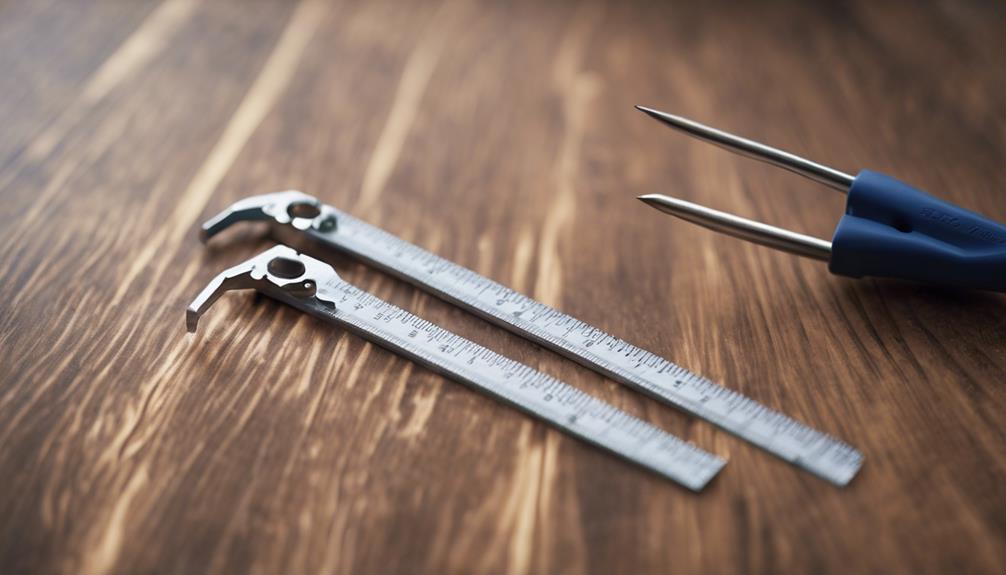
To achieve precise cuts when working with LED strip lights, having sharp scissors or a utility knife is vital. These tools are essential for ensuring clean and accurate cuts without damaging the LED lights.
In addition to sharp cutting tools, using a measuring tape or ruler helps in accurately measuring and marking the desired length for cutting. This precision is key to achieving the intended outcome when customizing LED strip lights.
- Sharp scissors: Essential for making clean and precise cuts on the LED strip lights.
- Utility knife: Useful for cutting through the LED strip lights with accuracy and control.
- Measuring tape: Helps in measuring the exact length needed for cutting, ensuring a tailored fit for your specific project.
Having the right tools on hand is fundamental for achieving professional-looking results when cutting LED strip lights. By using sharp scissors, a utility knife, and a measuring tape, individuals can effectively customize their LED lighting to suit their needs.
Tips for Cutting LED Strip Safely

Using sharp tools and following safety precautions is essential when cutting LED strip lights to guarantee a successful and accident-free process. When cutting LED strip lights, it's important to use sharp scissors or a utility knife at designated cutting points. This helps maintain the integrity of the lights and circuitry, ensuring clean and precise cuts.
Before starting the cutting process, always remember to disconnect the lights from the power source to prevent any accidents or damage. Following the manufacturer's instructions for cutting guidelines is also important to avoid voiding warranties. Proper measuring and marking of the desired length before cutting will result in a successful customization of LED strip lights.
Maintaining Copper Connection Integrity
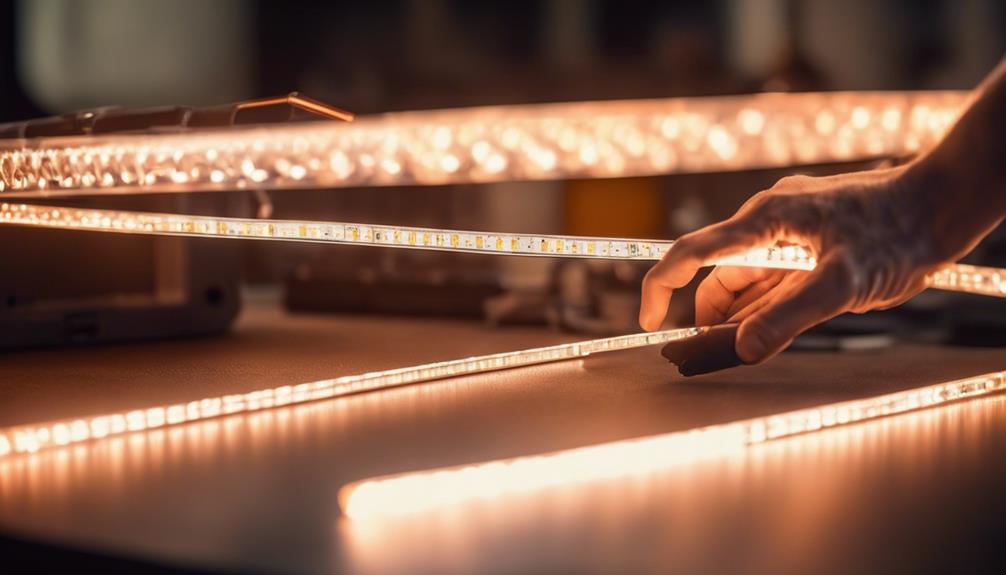
Preserving the copper connectors intact is essential when cutting LED strip lights to make sure the electrical connection remains unharmed. When maintaining copper connection integrity, consider the following:
- Use small scissors to cut across the copper connection line carefully.
- Remove the rubber cover from one side and the adhesive tape from the other side with caution to access the copper connections without causing damage.
- Ensuring the integrity of the copper connections during the cutting process is critical for the effective reconnection of the LED strip lights.
Maintaining the copper connection integrity is essential for the proper functioning of the LED lights post-cutting. By following these steps, you can preserve the electrical connection and guarantee that the LED strip lights continue to operate efficiently.
Remember that the copper connections play a significant role in the functionality of the lights, so handle them delicately while cutting to avoid any disruptions in their performance.
Securing Cut Ends for Continued Use

For continued usage of cut LED strip lights, consider employing a 4-pin connector to secure the ends effectively. When purchasing a 4-pin connector, make sure it fits the width of the cut strip ends to guarantee a proper connection. After inserting the cut ends into the connector, ensure it's securely closed to maintain a reliable electrical connection.
Without a 4-pin connector, the cut portions of LED strips can't be reused efficiently. Securing the cut ends with a connector not only allows for continued use but also enables seamless reconnection of the LED strip lights. By using a 4-pin connector, you can effectively maintain the functionality of the cut LED strips and avoid issues with loose connections.
This method provides a straightforward solution for ensuring the usability and practicality of your LED strip lights even after they've been cut to fit specific spaces.
Frequently Asked Questions
Can You Cut LED Light Strips and Still Work?
Yes, LED light strips can be cut and still work properly if done correctly. Cutting them at specific intervals marked on the strip allows for customization without damaging the lights or circuitry.
Reconnecting cut portions with a 4-pin connector guarantees a secure connection. As long as the cut portions are reconnected properly, the LED light strips can continue to function effectively for various lighting projects.
How Do You Cut LED Strip Lights?
LED strip lights can be cut at marked intervals for customization. Proper techniques with sharp scissors or a utility knife are important to avoid damage.
Following manufacturer instructions is essential for safety. Disconnecting the lights from power before cutting is a necessary precaution.
This process allows users to tailor the lights to specific spaces and design needs effectively.
Why Won't My LED Lights Work After I Cut Them?
When LED lights stop working after being cut, it's often due to damaging the circuitry or cutting at the wrong point. Disrupting the electrical connections needed for proper function is a common issue.
Cutting at non-designated points can break the circuit, causing malfunctions. Improperly reconnecting cut LED strips can also lead to lights not working as intended.
Following correct cutting and reconnecting techniques is essential to guarantee LED lights work after being cut.
How to Connect Multiple LED Strip Lights?
When connecting multiple LED strip lights, it's important to make sure that the voltage and current requirements match to avoid damage. Using connectors or soldering can link the strips together, while maintaining polarity is essential for proper function.
Extension cables or jumper wires can help bridge gaps between strips. For longer runs, consider using amplifiers or signal repeaters to maintain brightness and color consistency.
Conclusion
To sum up, cutting LED strip lighting is a straightforward process that requires attention to detail and precision. By following the identified cutting lines, using small scissors, and ensuring the copper connectors remain intact, one can easily customize the length of the strip to fit their needs.
Remember to secure the cut ends for continued use and maintain the copper connection integrity. With these simple steps, cutting LED strip lighting can be as easy as pie.
